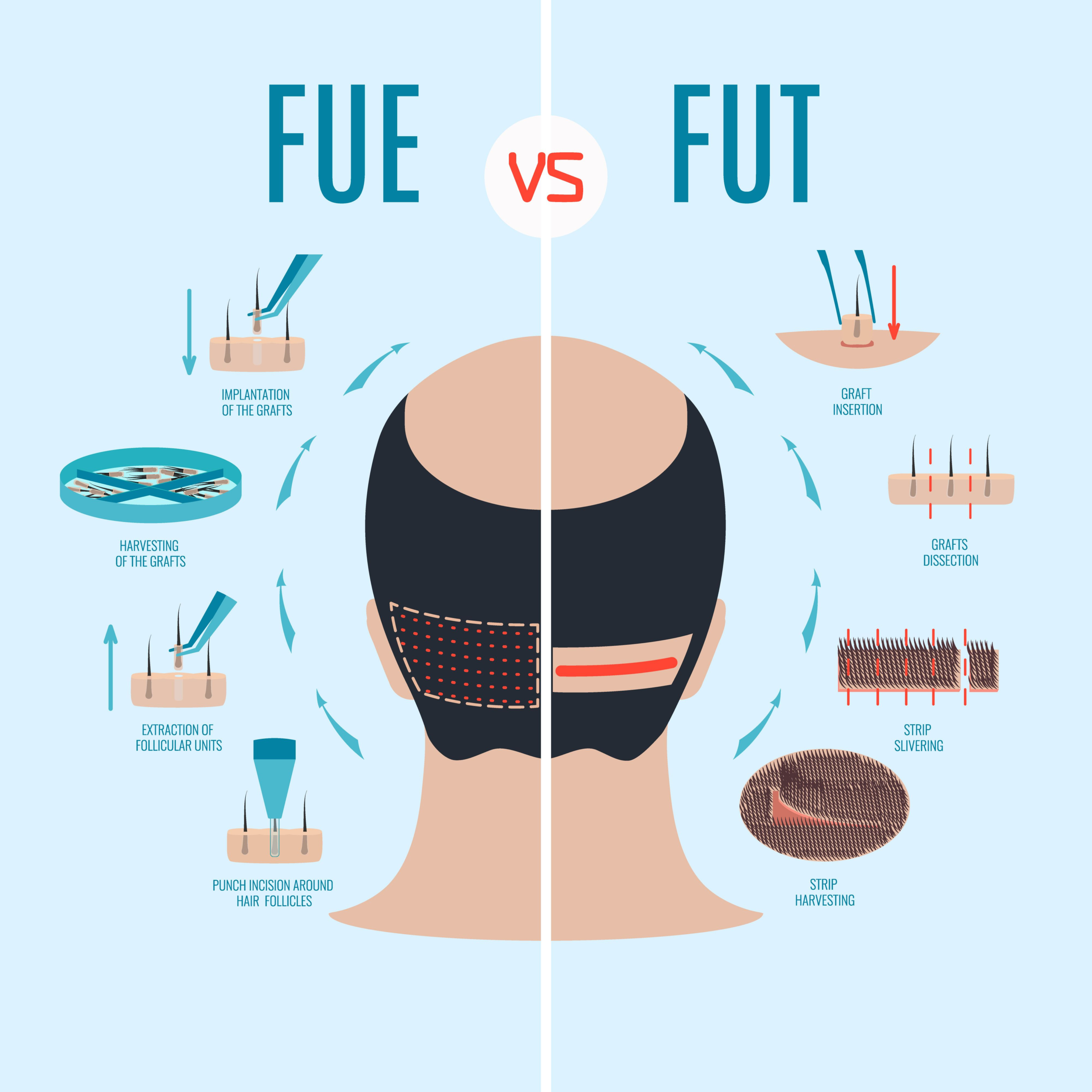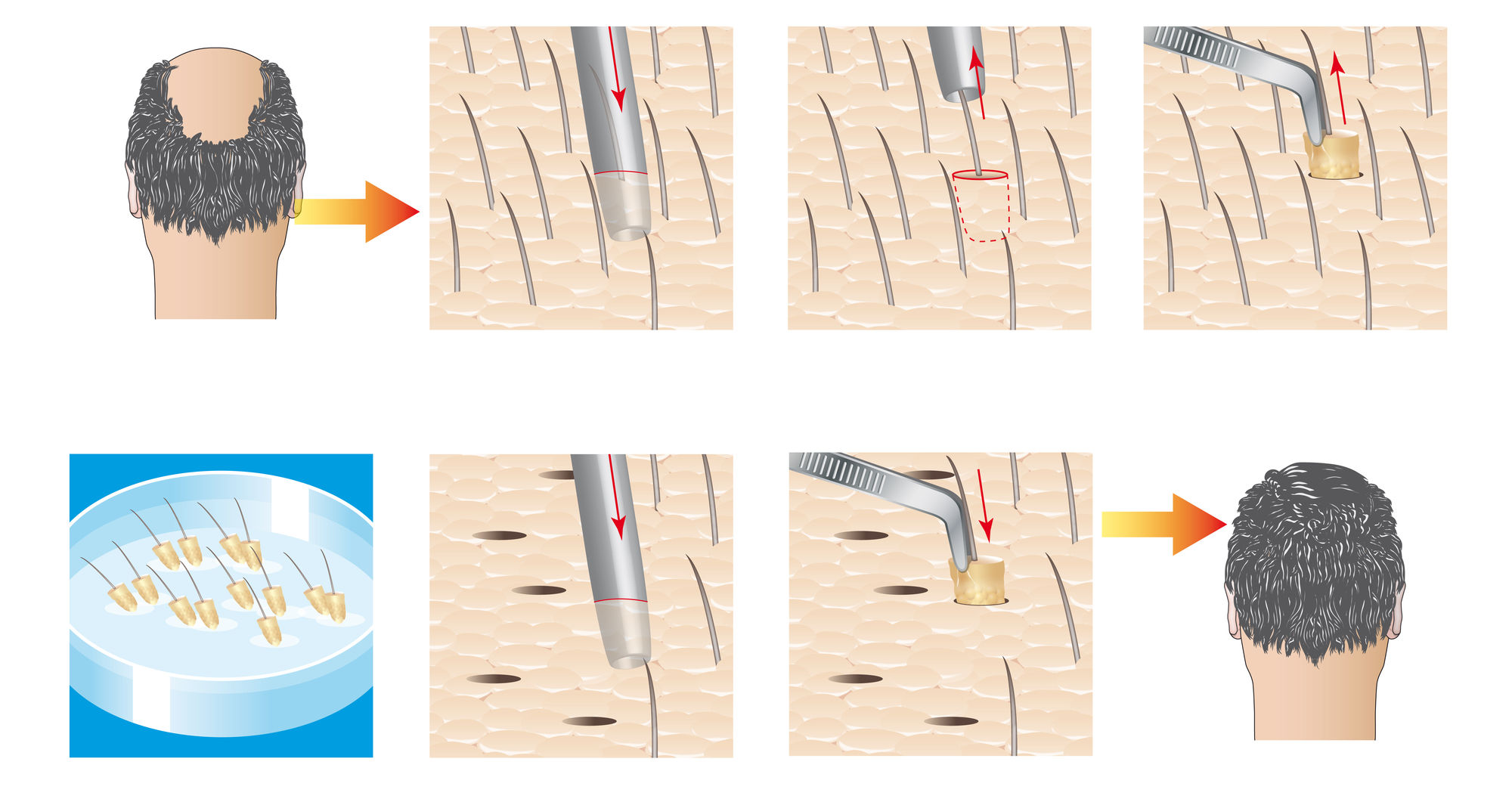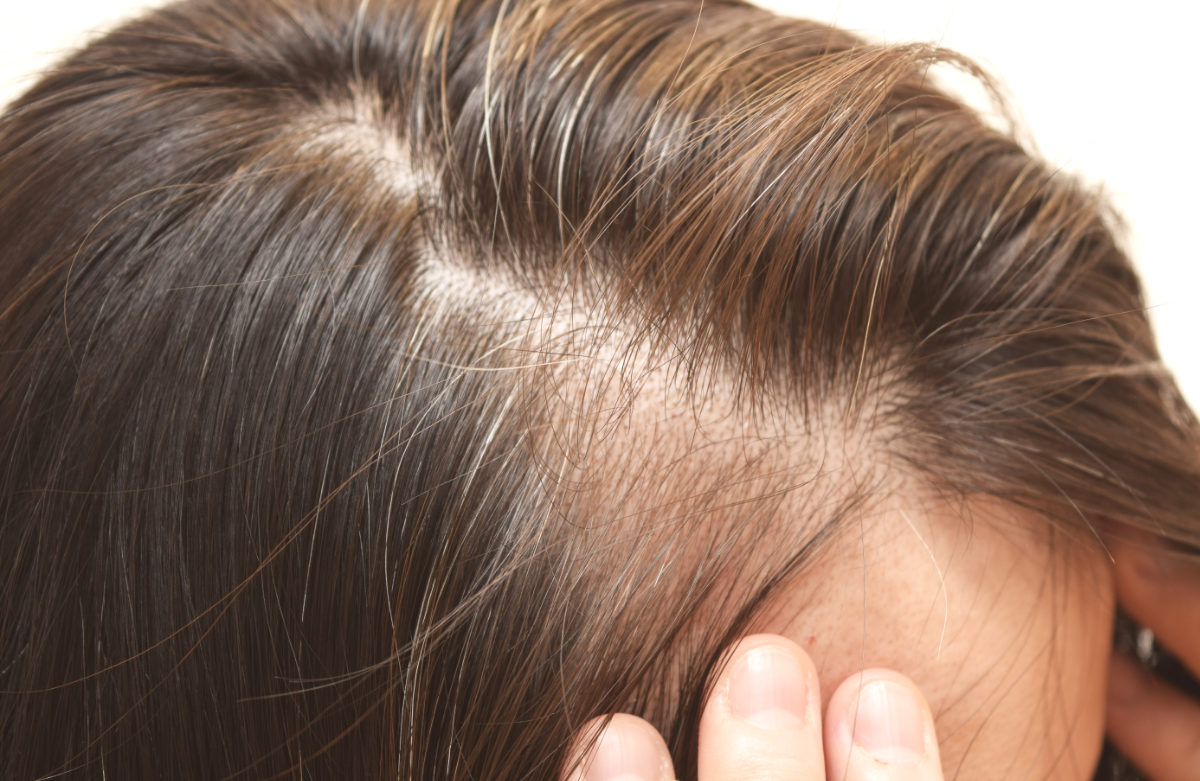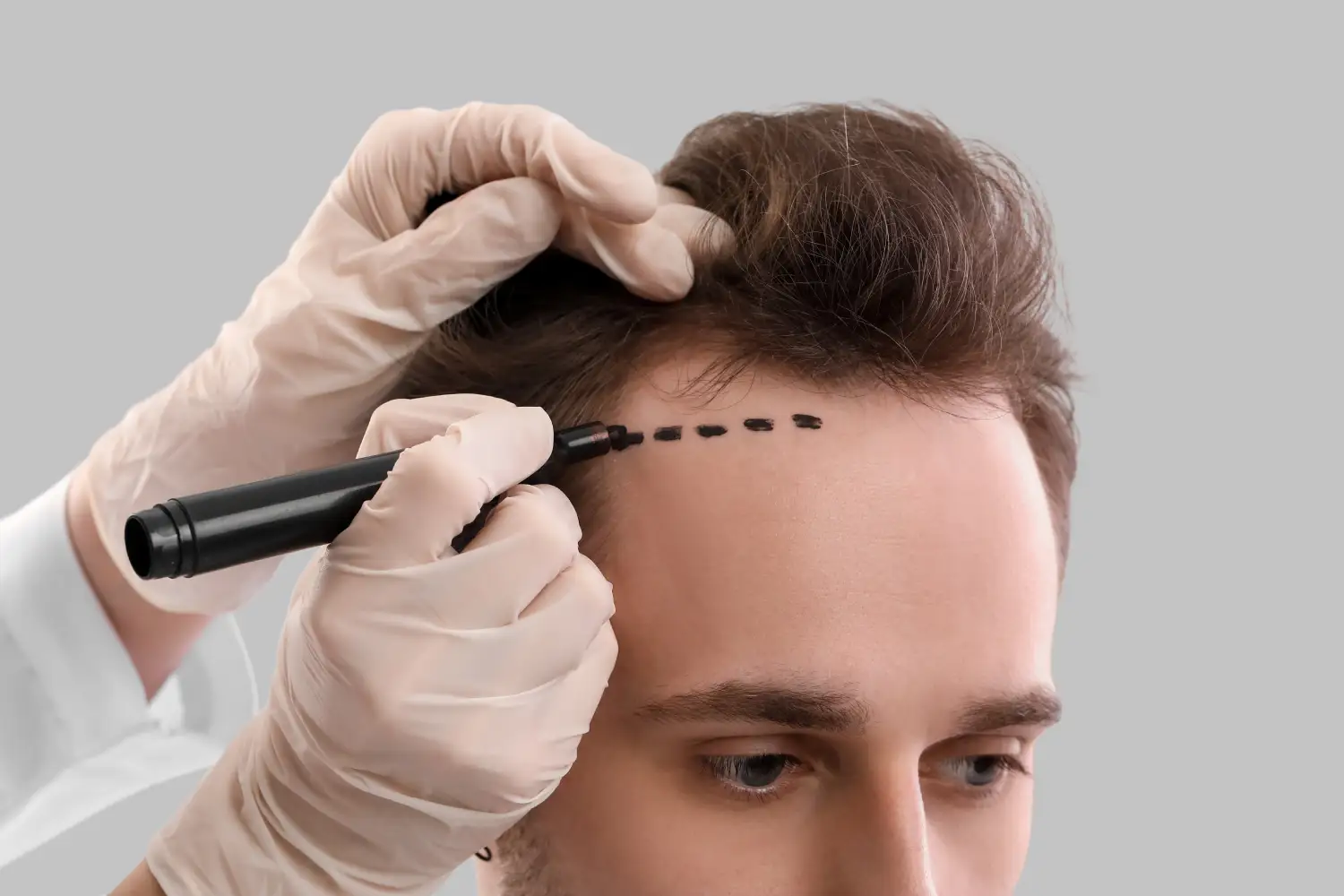Hair loss, or alopecia, happens when new hair doesn’t replace hair that fell out. In most cases, hair loss is not the result of an underlying internal or systemic disease but rather the ageing process or predetermined genetic factors. Many women and men start noticing pattern baldness or thinning hair in their 40s.
Other causes of hair loss include protein deficiency, emotional trauma, and hormonal changes due to puberty, pregnancy, or menopause. Medical conditions, such as iron deficiency anaemia and thyroid disease, can also cause hair loss.
A number of solutions are available to cover areas affected by hair loss, including the application of hair-fibre powder, hair extensions, and wigs. If you are looking for a more permanent hair loss treatment and natural-looking results, you can also consider a hair transplant surgery.
A hair transplant is a revolutionary procedure that has transformed the lives of countless individuals dealing with hair loss and baldness. As we explore the intricacies of this remarkable treatment, we’ll uncover what a hair transplant is, how it works, and what you can expect before and after undergoing the procedure.
What Is a Hair Transplant and Why Would Someone Want One?
A hair transplant is a surgical procedure designed to address hair loss by moving healthy hair follicles from one area of the body (often the back or sides of the scalp) to the areas where hair is thinning or balding. This technique is commonly used to treat androgenetic alopecia, also known as male or female pattern baldness, but it can also help those with hair loss due to injury or scarring.
Hair transplantation involves surgery to transfer hair from a donor area, such as the back of the head, to bald areas. The hair transplant surgeon may also perform a body hair transplantation, in which case the hair follicles come from a hair-bearing donor site elsewhere on the body.
A qualified doctor, such as a dermatologist or plastic surgeon, performs hair transplant procedures in a clinic, doctor’s office, or any other approved treatment facility. Before the hair transplant surgery, your doctor will schedule a consultation with you to examine the balding or thinning areas and discuss the hair loss treatments you have available.
Follicular transplants are becoming increasingly popular. If you have bald spots on your head or beard, a hair loss procedure can transform your appearance.
How does a Hair Transplant Work?
The hair transplant procedure typically involves two main methods: Follicular Unit Transplantation (FUT) and Follicular Unit Extraction (FUE).
Follicular Unit Transplantation (FUT):
In FUT, the surgeon removes a narrow strip of skin containing hair follicles from the donor area. The donor area is usually the back or sides of the scalp, where hair is genetically resistant to balding. After carefully extracting the follicular units from the strip, the surgeon then transplants them into tiny incisions made in the recipient area, where hair growth is desired.
Follicular Unit Extraction (FUE):
FUE hair transplants are a more advanced and minimally invasive technique. Instead of removing a strip of skin, the surgeon individually extracts hair follicles directly from the donor area using specialised instruments. These follicles are then meticulously transplanted into the recipient area. FUE leaves minimal scarring and offers a faster recovery time compared to FUT.
Both FUT and FUE are performed under local anaesthesia, ensuring the patient’s comfort during the procedure. The transplanted hair follicles eventually take root and grow naturally, providing a fuller and more permanent hairline over time.

Before and After Your Hair Transplant
Whether it’s a receding hairline or thinning hair, dealing with hair loss can be a challenging experience that greatly impacts our confidence and self-esteem. Thankfully, there’s a highly effective solution available – hair transplant surgery – which can help restore both our hair and confidence.
For a successful and satisfying hair transplant journey, it’s essential to familiarise yourself with the process and know what to expect before and after the procedure. This comprehensive guide will walk you through every step of hair transplantation before and after surgery. From thorough preparation to postoperative recovery to selecting the right hair transplant clinic to ensure you achieve your desired outcome, this guide will ensure you fully understand the key considerations of hair transplant surgery.
Pre-Procedure Preparation
Before undergoing a hair transplant, it is essential to consult with a qualified hair transplant specialist to determine if you are a suitable candidate for the procedure. The specialist will evaluate your medical history, examine your scalp, and discuss your goals and expectations.
Leading up to the surgery, your doctor may advise you to discontinue certain medications or supplements that could interfere with the procedure or healing process. Additionally, they may provide specific instructions on how to prepare for the surgery, such as avoiding alcohol or smoking in the days leading up to the procedure.
The Hair Transplant Procedure
On the day of the surgery, you will be guided through the pre-procedure preparations and introduced to the surgical team. The duration of the surgery depends on the extent of the transplant and the chosen technique (FUT or FUE). Hair transplant surgery is a revolutionary procedure that involves the transplantation of healthy hair follicles from one part of the body, often the back or sides of the head, to the areas experiencing hair thinning or baldness. The results are natural-looking hair growth and a restored, more youthful appearance that transforms the lives of countless men and women.

The first step of a hair transplant surgery is to sterilise the donor area and numb it with a local anaesthetic. Hair restoration surgery tends to be uncomfortable, and your doctor may administer sedation so you’ll sleep during the procedure.
A surgeon has two options for a hair transplant procedure: FUSS (follicular unit strip surgery) and FUE (follicular unit extraction).
Follicular Unit Strip Surgery (FUSS)
The strip method, or follicular unit transplantation (FUT), is a hair restoration technique involving follicular extraction from a piece of scalp.
Every FUT follows a similar hair transplant procedure:
- The surgeon cuts a strip of hair-bearing skin from your scalp, using a scalpel. The skin strip’s size depends on how many follicles are necessary to cover the recipient site, but it can be up to six inches long and up to 0.6 inches wide.
- After removing the strip, the surgeon will close your scalp using sutures, while assistants or technicians cut the skin containing the donor hair into as many as 2,000 fragments, called hair grafts. A single graft can include one or more hairs.
- The surgeon uses a needle to make small puncture holes into the scalp in the recipient area – one for each of the donor grafts. The puncture groupings are random and similar to the way hair naturally grows.
- After preparing the recipient area, the surgeon inserts the grafts containing the hair into the puncture holes, using a technique called grafting.
- The surgeon completes the procedure by covering the surgical site on your head with gauze and bandages.
The number of grafts you’ll need with a FUT treatment plan depends on various factors, including:
- The size of the graft area
- The quality and thickness of the transplanted hairs
- The colour of the transplanted hair
- Your existing hair type, for example, straight or curly
Follicular Unit Extraction (FUE)
To an extent, the FUE hair transplant procedure is similar to the FUT method, but it doesn’t involve the removal of a strip of scalp skin. During a FUE hair transplant surgery, the doctor removes the hair follicles directly from the scalp skin, then grafts the donor follicles into individual punctured holes in the bald area.
Your doctor will schedule a consultation with you to decide which form of surgery is best for you. With both FUE and FUT techniques, you’ll need enough hair on the back of your head to use as grafts.
If you have androgenic alopecia or male pattern baldness, your doctor will likely recommend a FUT hair transplant. However, if you suffer from alopecia areata or thyroid disorder, you may be a better candidate for FOE surgery.
Aftercare and Recovery
Following the hair transplant, the treated area may experience some redness, swelling, and mild discomfort. Your surgeon will provide post-operative instructions on how to care for the transplanted area to promote healing and reduce the risk of infection.
It’s important to remember that the transplanted hair will initially shed in the weeks following the procedure. However, this is a normal part of the process, and new hair growth will gradually emerge within a few months.
Why is PRP Recommended After a Hair Transplant?
Alternative Hair Loss Treatments – PRP

Platelet-rich plasma (PRP) is a relatively modern technique and a natural, non-surgical, alternative treatment for hair loss. The PRP process involves drawing your blood and spinning it in a machine to extract the plasma, which is the liquid component of whole blood. Plasma is water with a high concentration of proteins and platelets, which promote cell regeneration and growth.
With PRP, the therapist injects the platelet-rich plasma into the scalp, where it reaches and interacts with the dormant hair follicle to regenerate dermal papilla cells, which, in turn, promote hair growth. Even though PRP procedures are generally less invasive, they can produce the same results as conventional hair transplantations.
Questions About Hair Transplants?
Are Hair Transplants Dangerous?
Hair transplants have a 100% survival rate, and you have nothing to worry about in terms of mortality. However, infection, swelling, and inflammation are the most prominent risks of these procedures. A qualified dermatologist or plastic surgeon will take steps to mitigate your risks and ensure optimal results.
Can Anyone Get a Hair Transplant?
In terms of race and gender, there are no limits to who can successfully undergo hair transplantation. However, to be a candidate for a hair transplant, you need a sufficient supply of healthy hair on your scalp that the surgeon can transplant to the recipient area. The thinning area on your head should also be able to sustain the new follicles and grow hair.
What Is a Maturing Hairline?
When people reach a certain age, their hairline starts maturing or receding to a length of up to 1.5 inches above the top wrinkle. A maturing hairline is normal and doesn’t constitute balding. If you are in your thirties and notice your hairline receding, give it a few months before considering hair loss treatments.
How Long Do Hair Transplants Last?
After your hair transplantation surgery, it can take up to six months before you’ll see significant changes in your appearance, and the change will be complete within a year. If the hair transplant were a success, the results would last a lifetime.
However, there is a small risk that the area will start thinning or balding again, in which case you’ll need additional treatments. Scheduling PRP after your surgery will reduce your risk of balding in the future.
What Is the Success Rate of Hair Transplants?
According to the National Institute of Health, 10% to 80% of transplant hair grows out within four months after surgery, and most qualified doctors have a success rate ranging from 95% to 98%. To ensure you have a successful hair transplant, use the services of a reputable and qualified doctor with a proven track record.
Why Choose Hair & Skin Science for Hair Transplantation in Australia?
At Hair & Skin Science, we are the experts in hair transplant services, specialising in cutting-edge techniques for effective hair restoration. Our highly qualified and experienced hair transplant specialists are dedicated to providing personalised care, ensuring natural-looking results tailored to your unique needs. As an accredited clinic with a proven track record, we have transformed countless lives, helping our patients regain their confidence with a full head of hair.
Whether you’re looking for a hair transplant in Melbourne, a hair transplant in Sydney, or perhaps one of our other 25 locations around Australia, we have the expertise and experience to handle your hair loss treatments with the upmost professionalism and care.
Choose Hair & Skin Science for a trusted and professional hair transplant experience that will exceed your expectations. If you need further information or would like to schedule a consultation, don’t hesitate to contact us. Our team is ready to assist you on your hair restoration journey.





